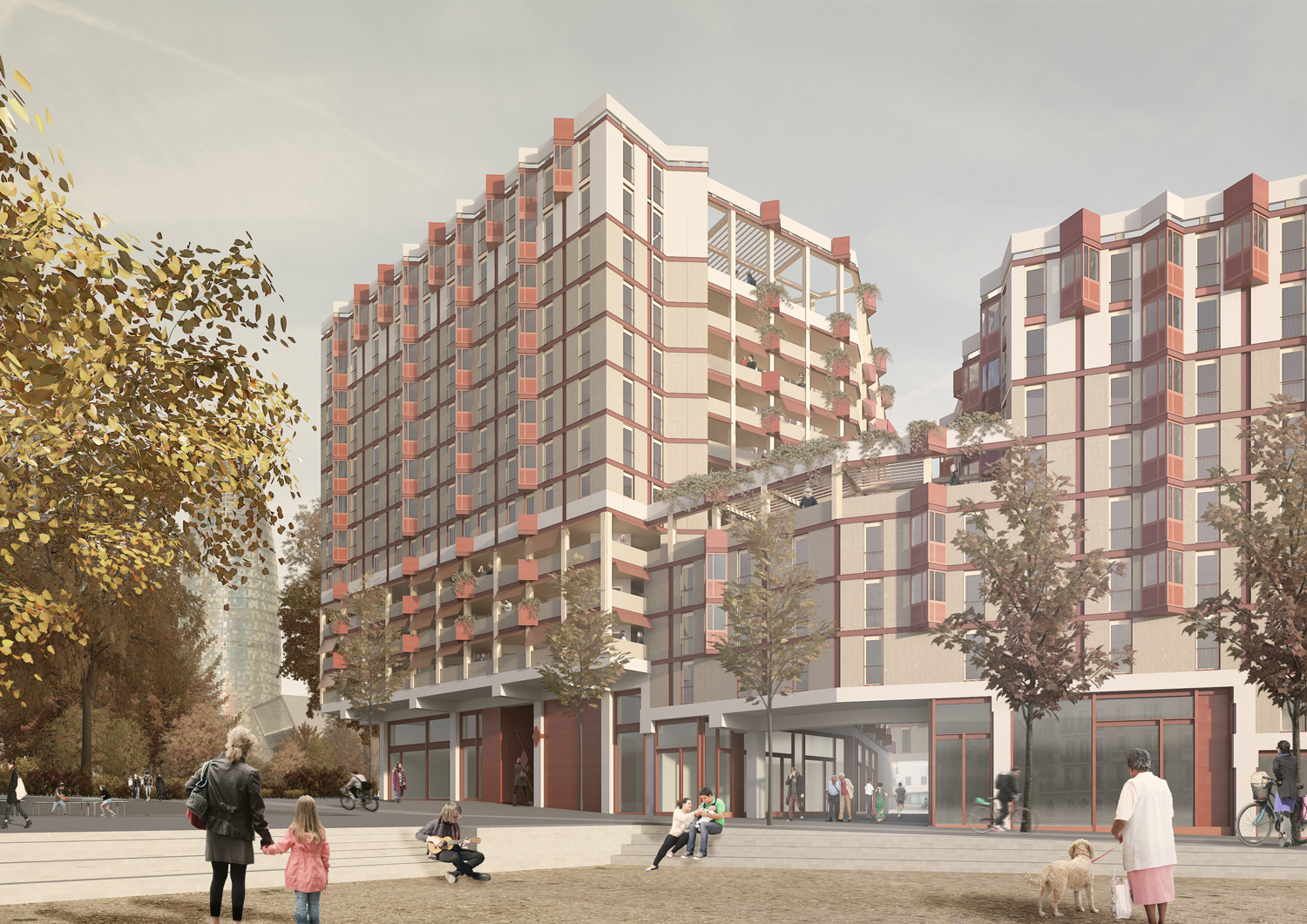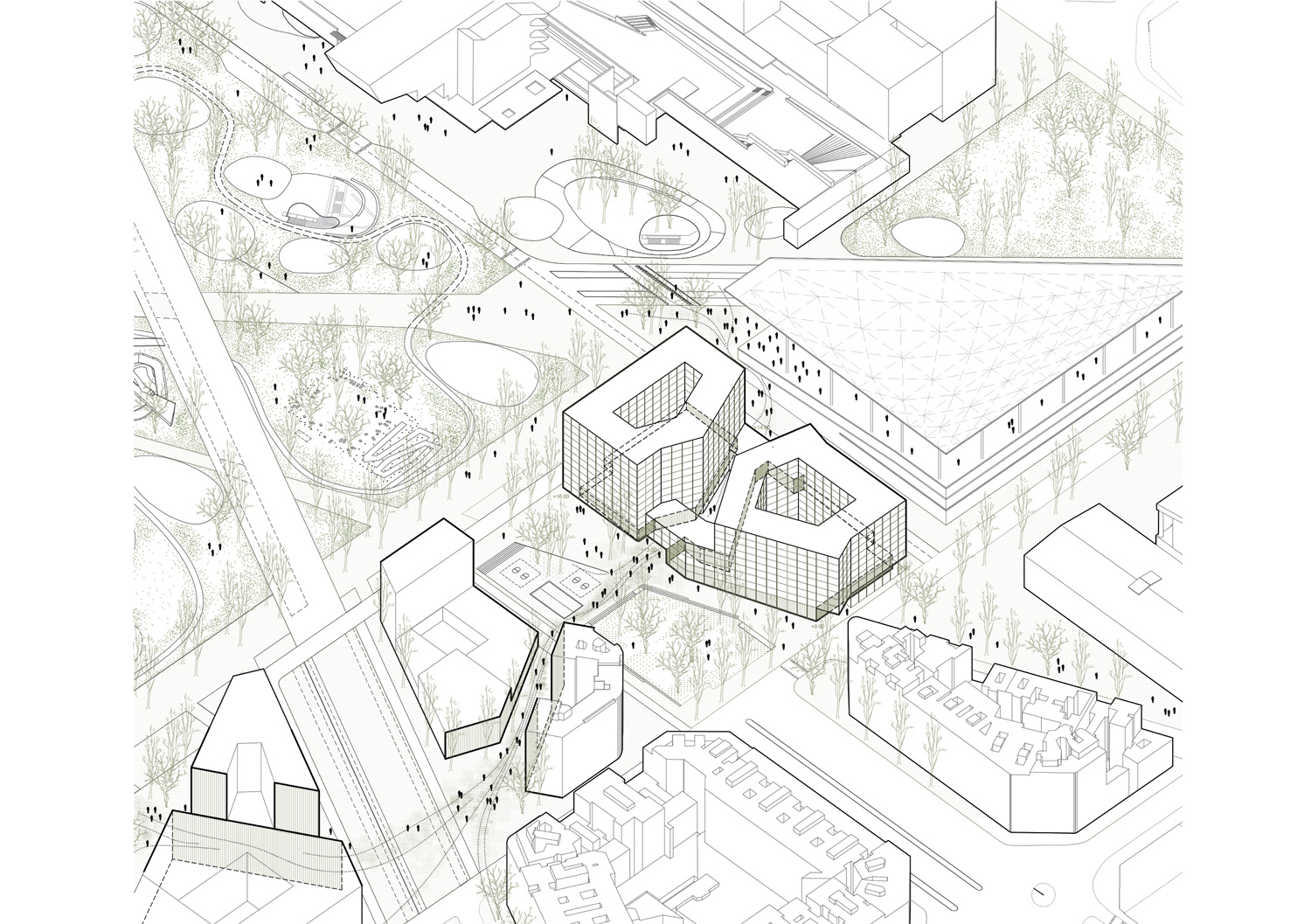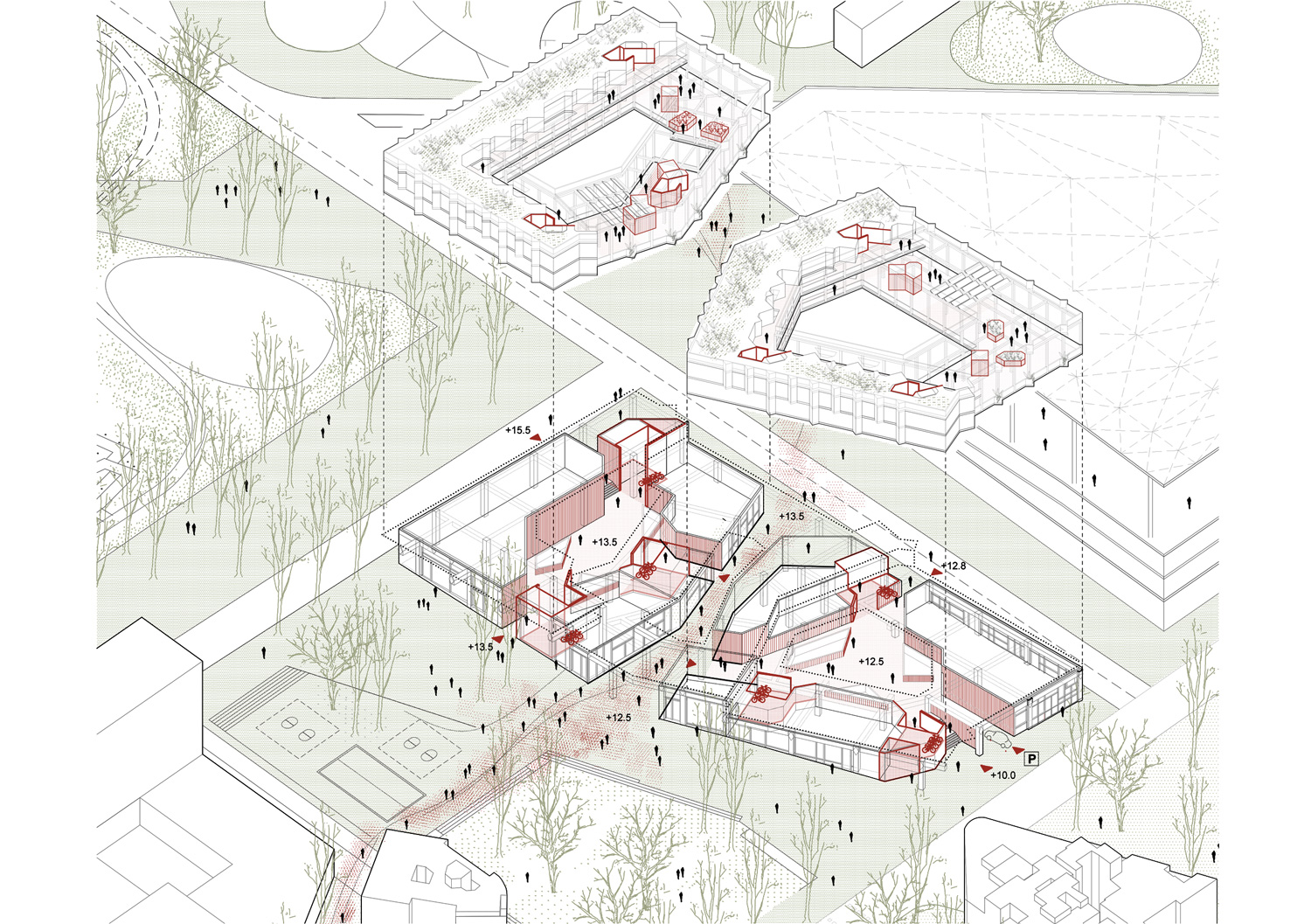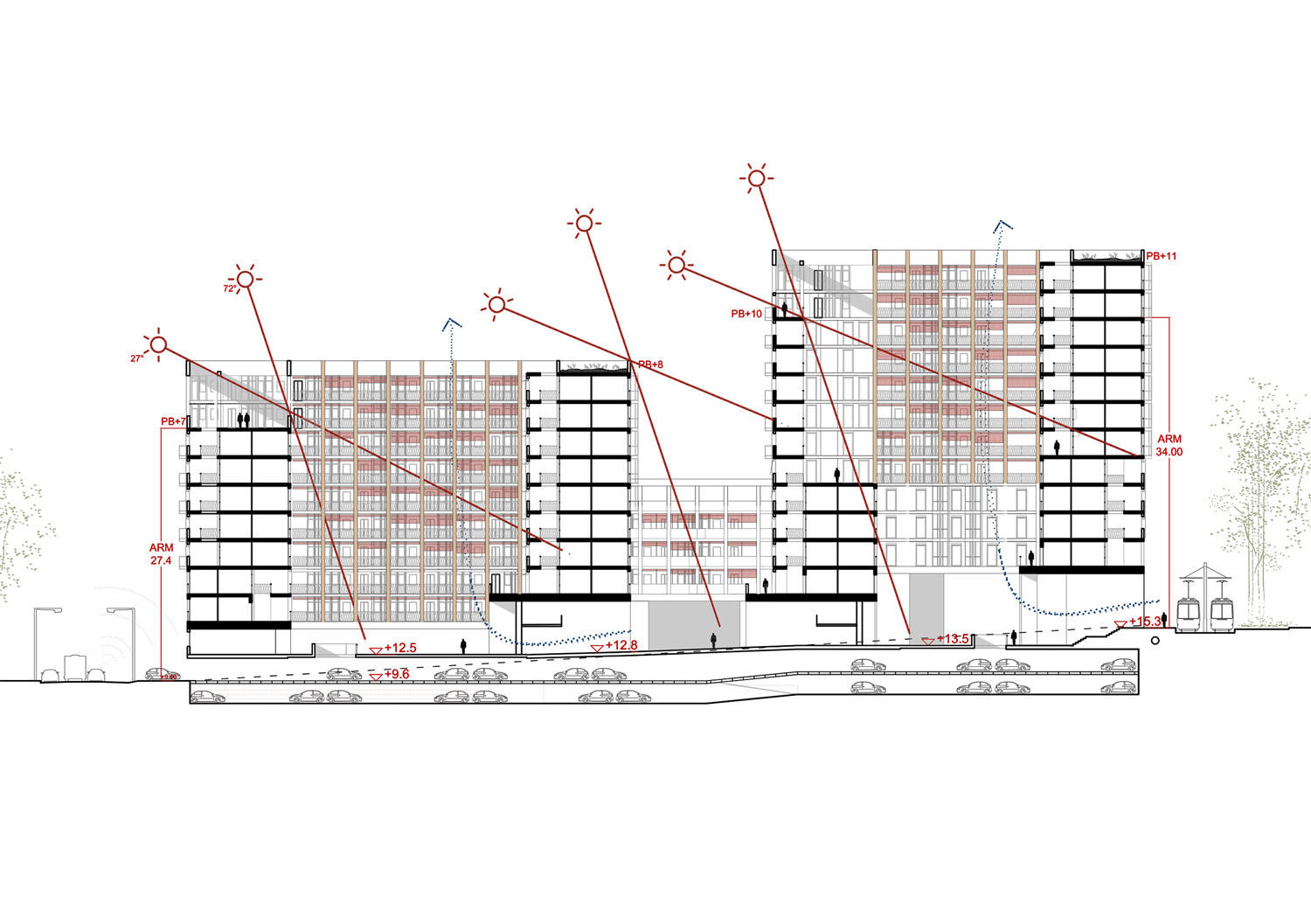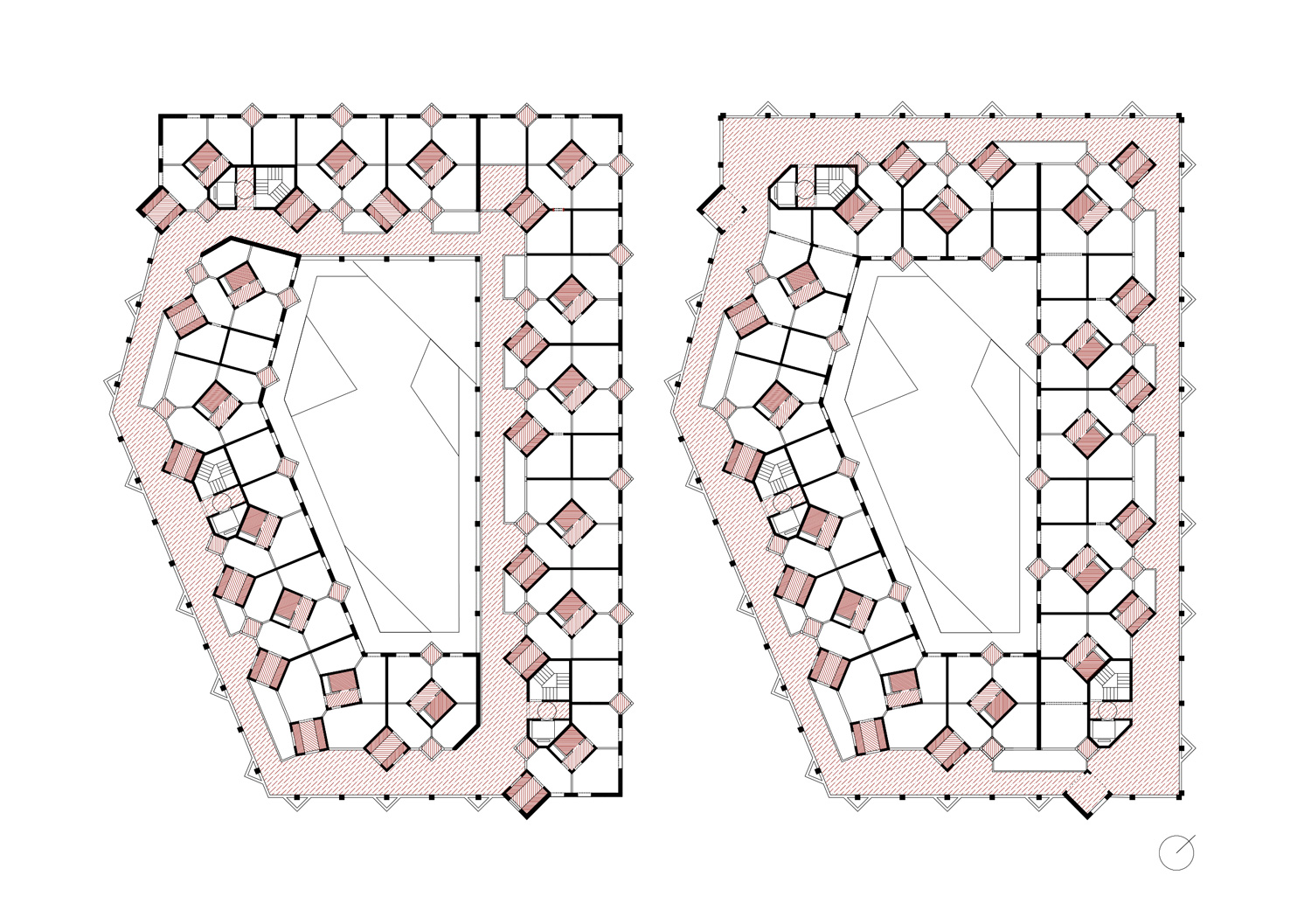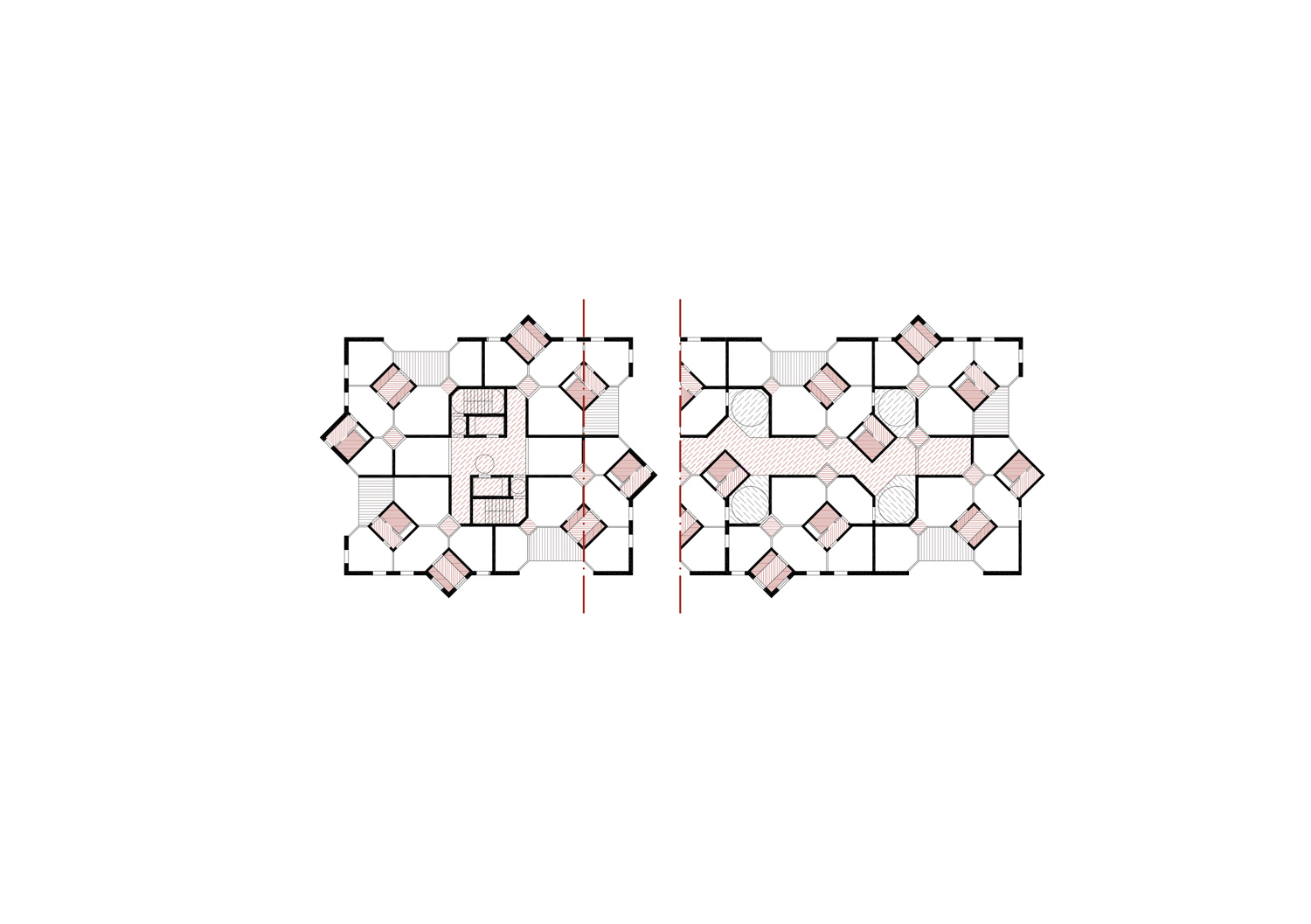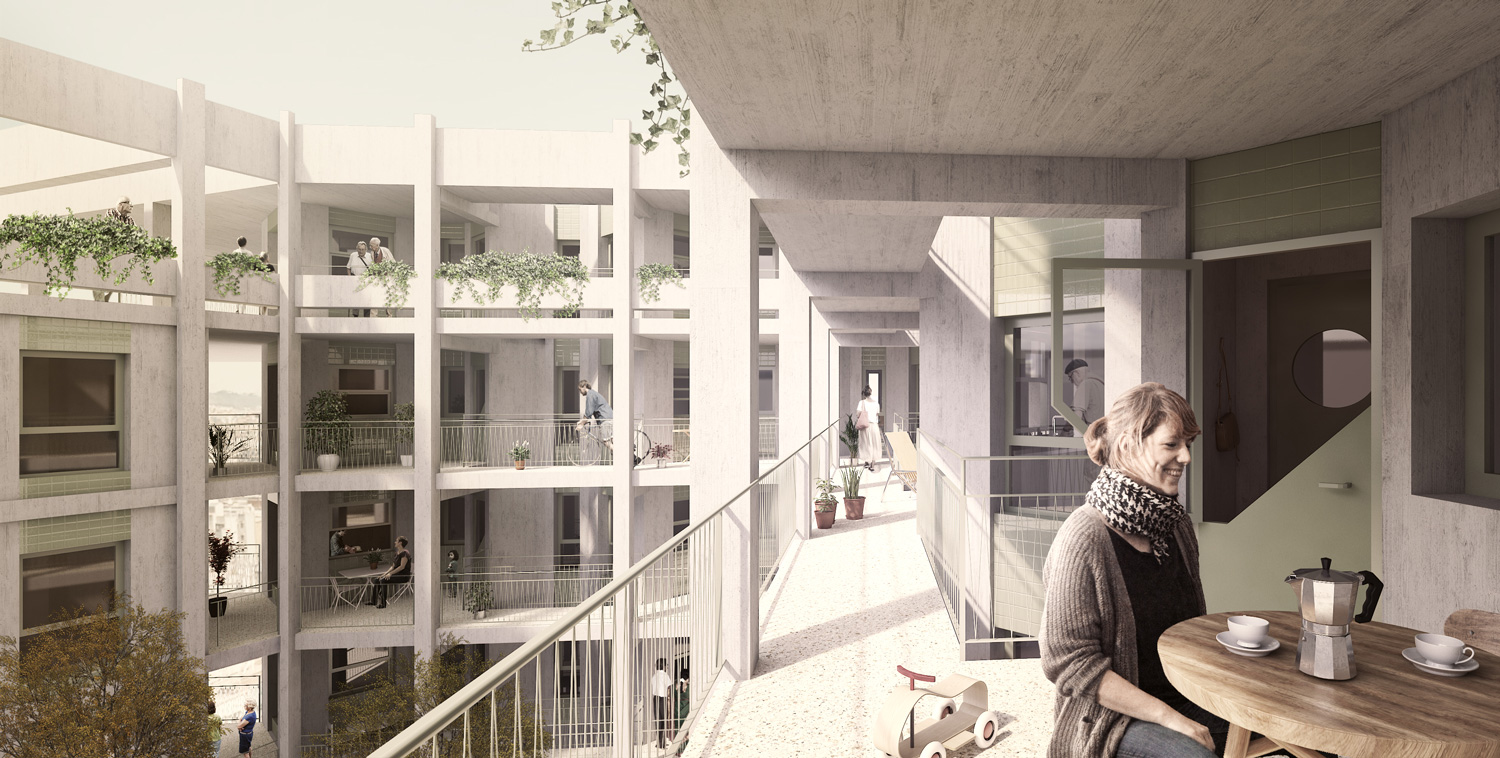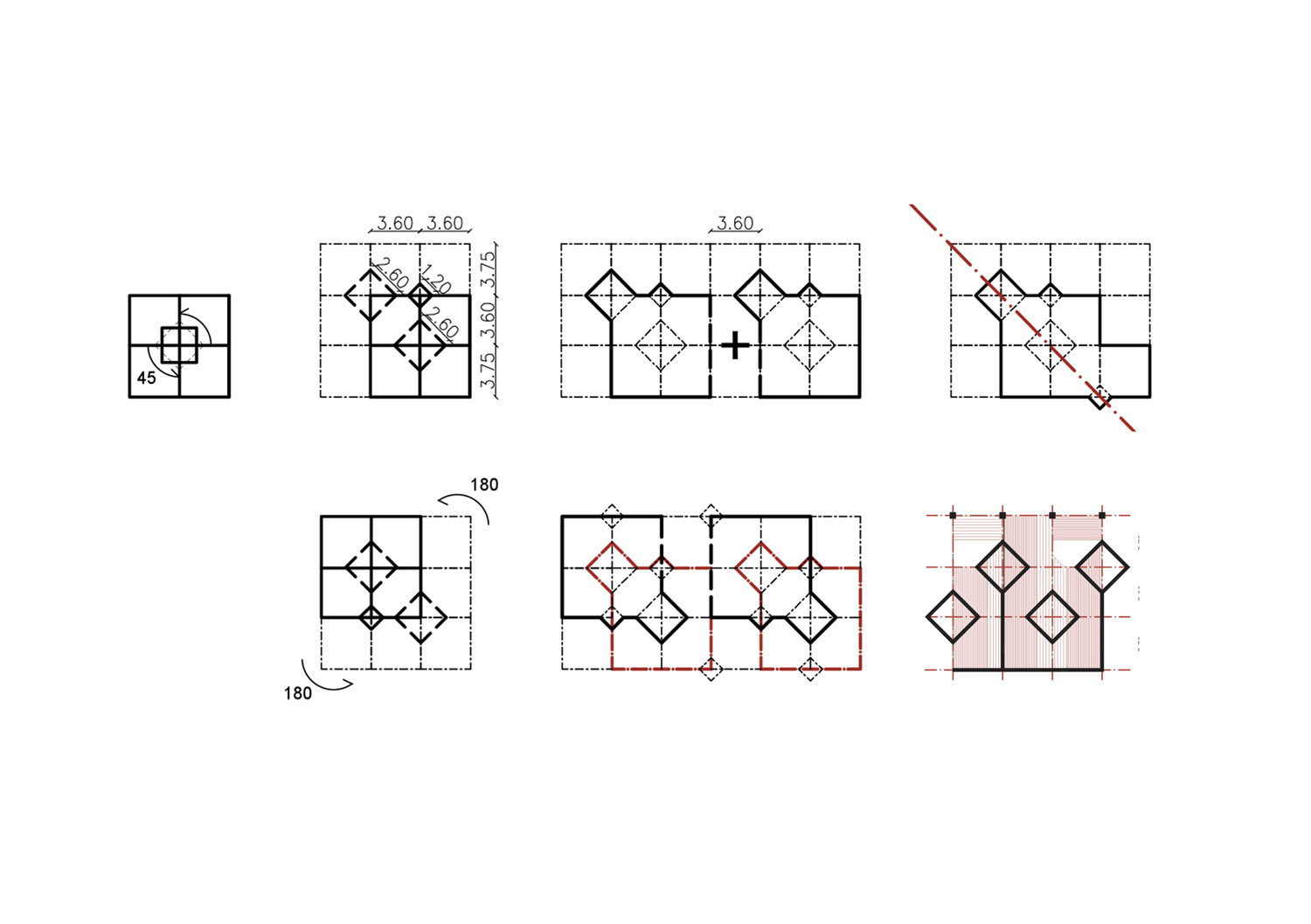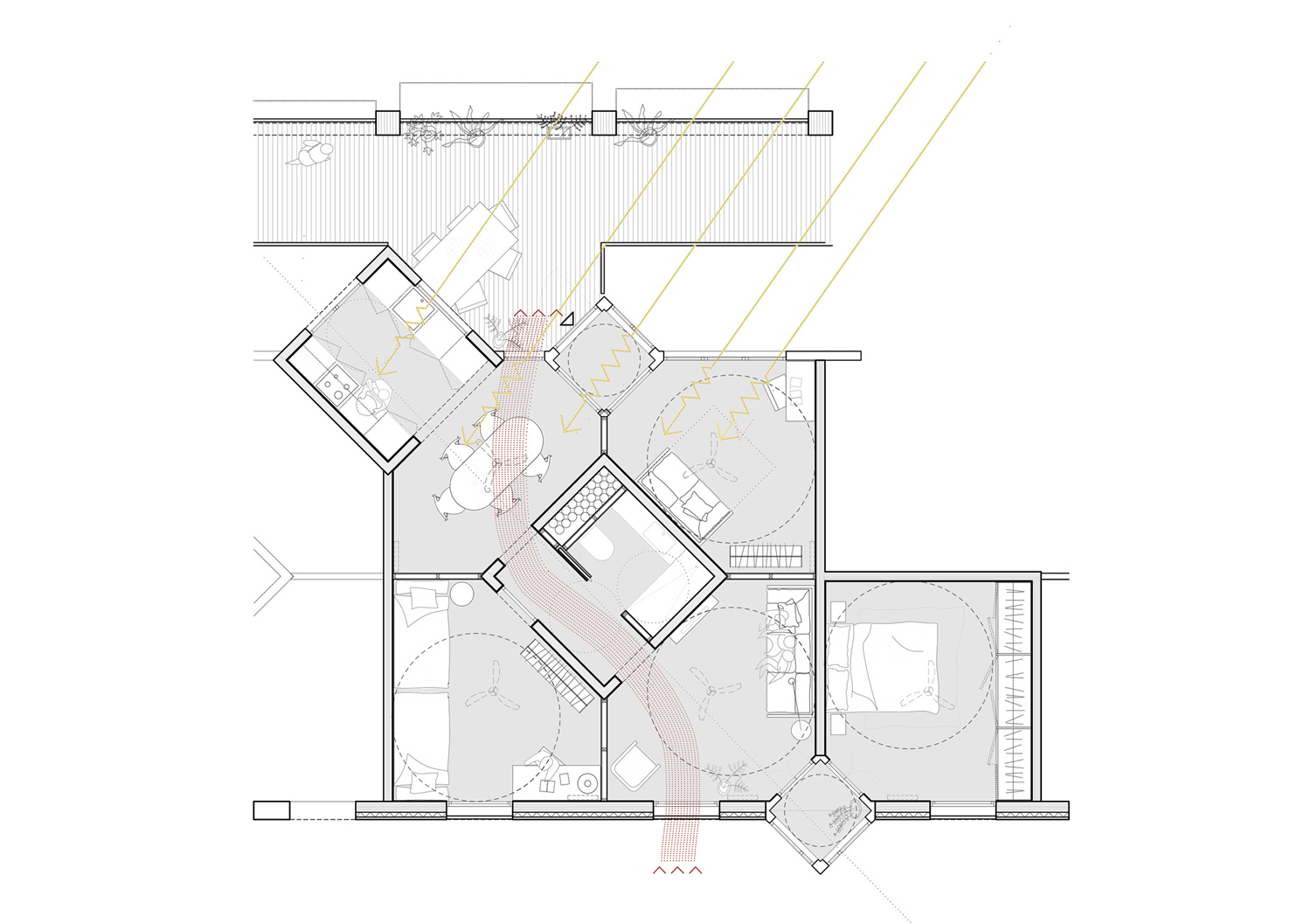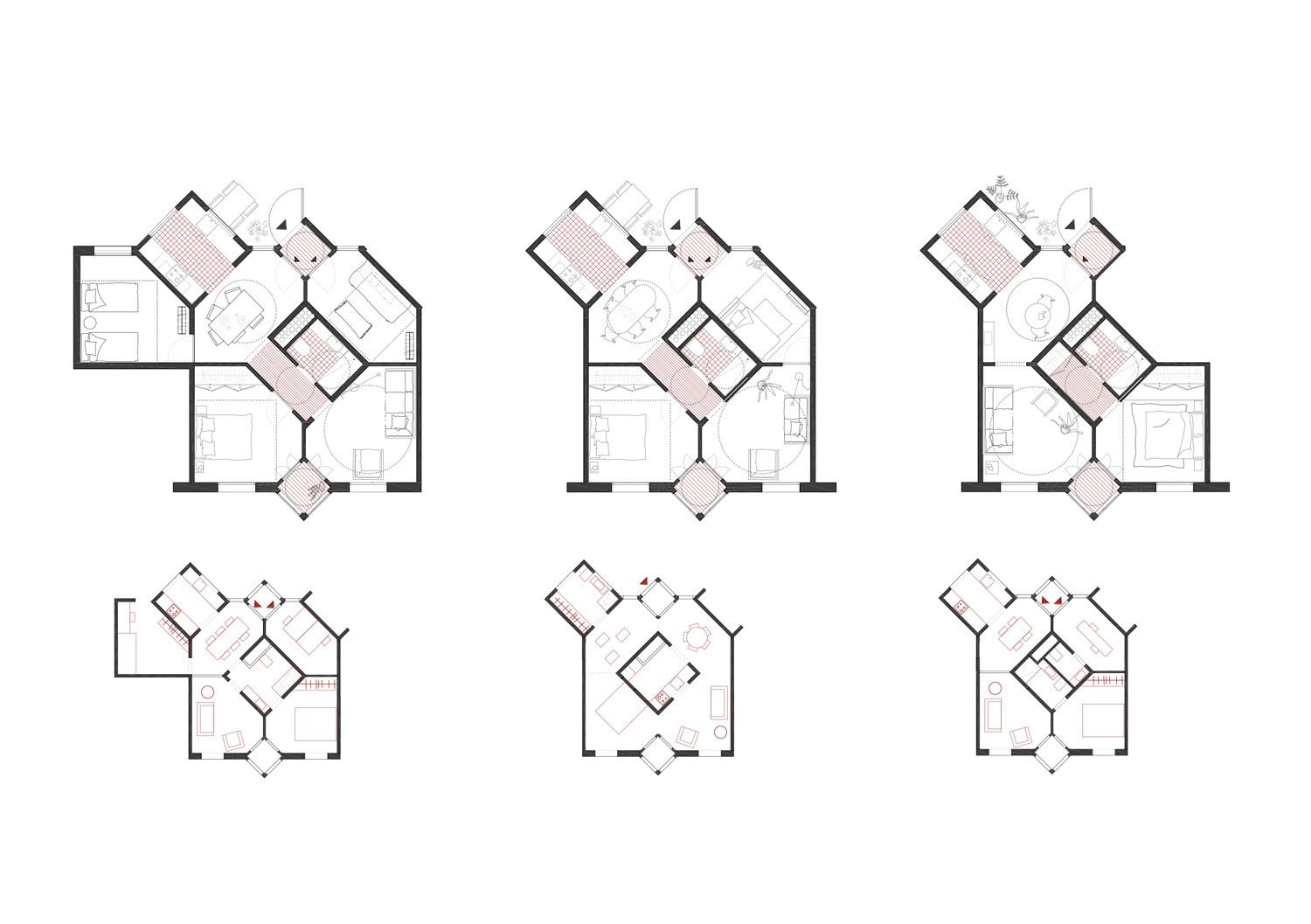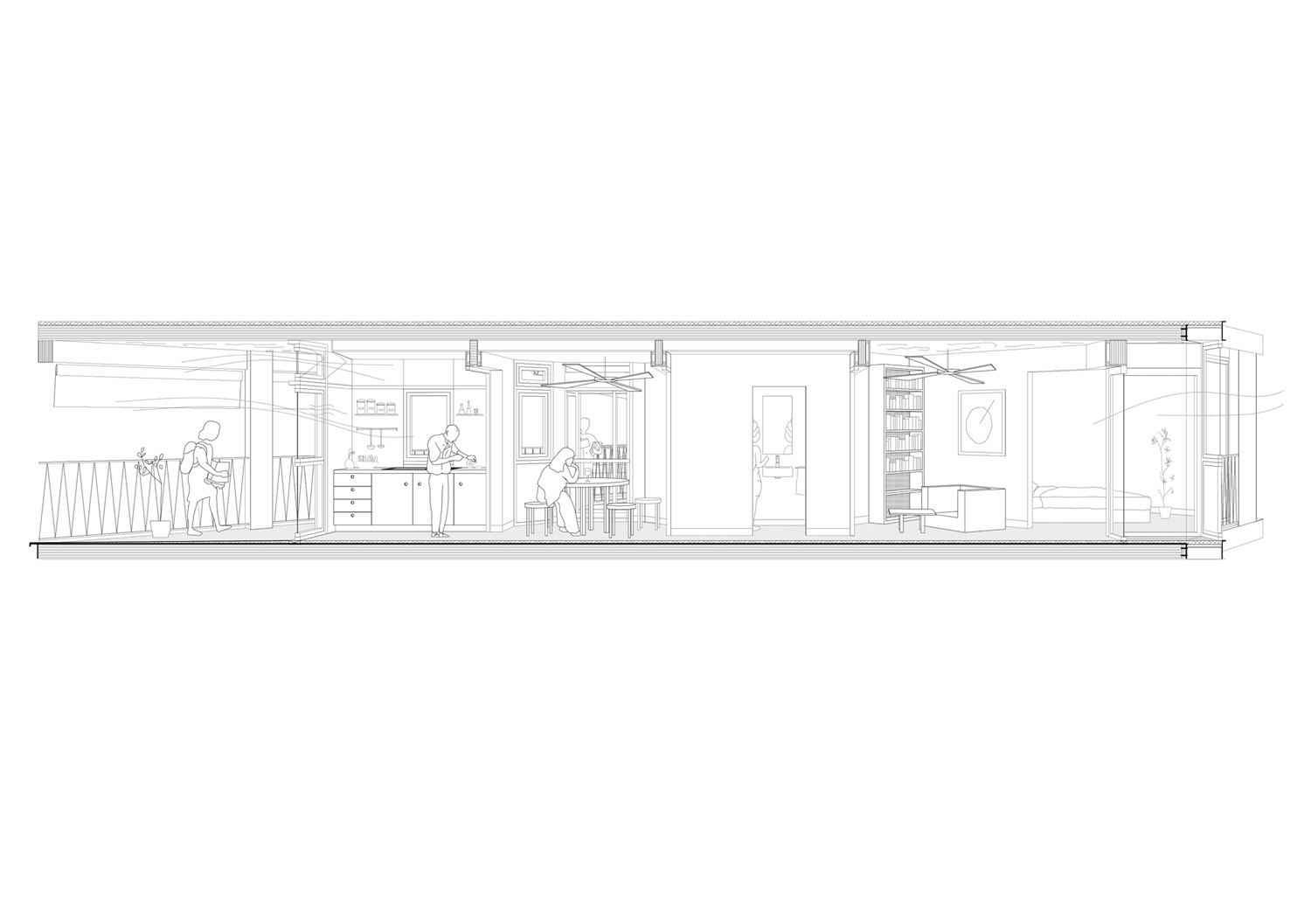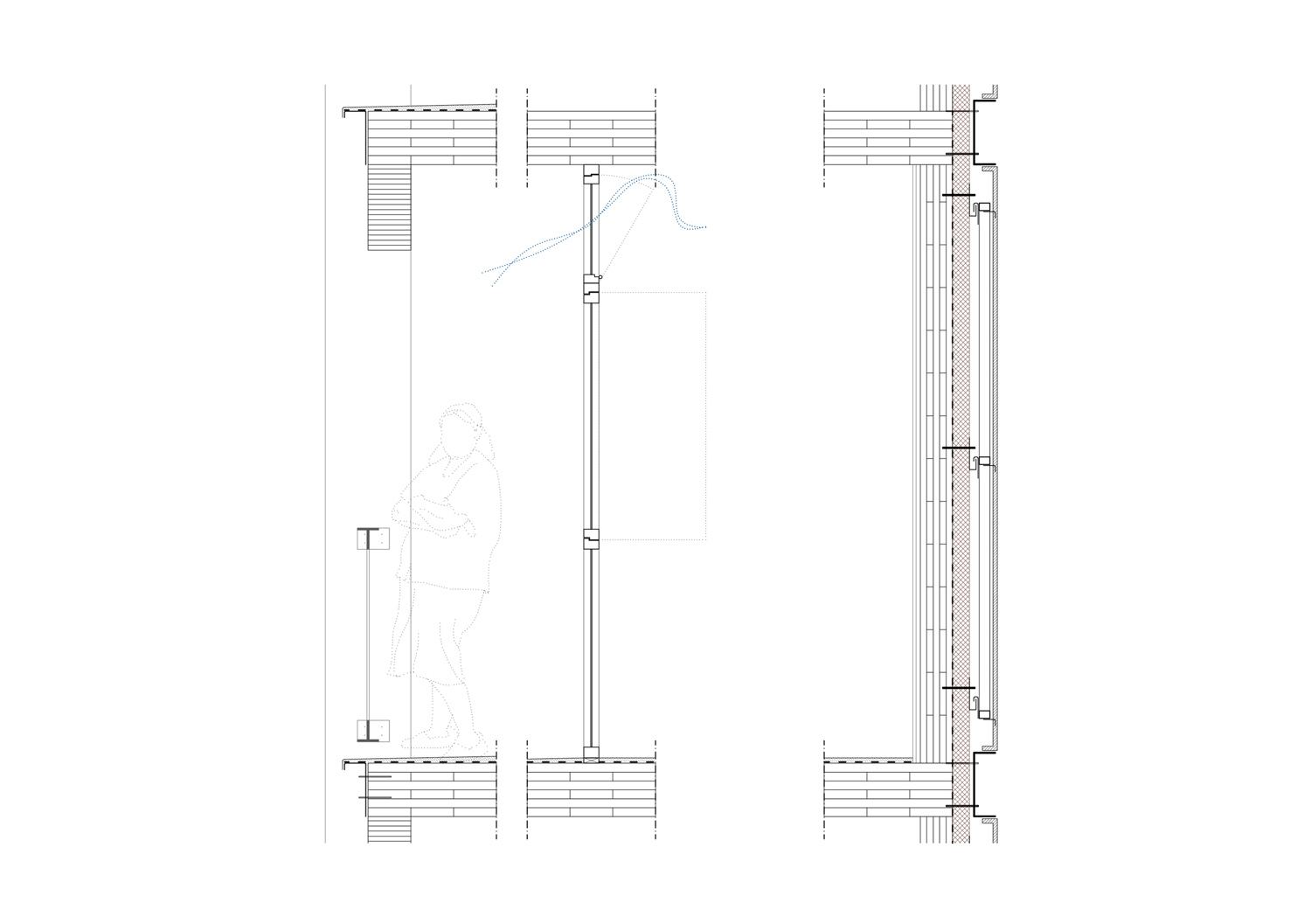☉ The Room Community is a winning proposal by Cierto Estudio for Patronat Municipal de l'Habitatge de Barcelona in 2017. It is located in Barcelona Spain in an urban setting. Its scale is medium. Key material is wood.
We conceived a dense block that can give continuity to the Eixample’s consolidated urban grid and offer some intentional permeability in contact with the street. A clear volumetry that reveals from a distance its desire to elongate an incipient pedestrian route that starts in Diagonal and ends at the main entrance of Mercat dels Encants. The two prominent volumes group the plot’s free space into two large courtyards that are protected from public activity for the neighbors to enjoy. Thus, the friction between the units promotes an urban touch in the walkway, while the houses breathe quietly in the courtyard.
Both the urban planning decisions and the architectural coherence led us to devise an arrangement that solves four plots in two volumes joined by a common plinth. This poses a professional challenge that undoubtedly involves teams interrelating to give cohesion to the block’s architectural ensemble.
A collective and flexible building
We believe in collective housing and for that reason, the houses are accessed through the most generous of communal space: the balconies. This outdoor space is a meeting point that generates a sense of community among neighbors and connects the houses with other shared spaces: the patio and the roof. This continuous communal balcony is transformed when the access spaces and kitchens come out to find it, claiming the importance of the domestic domain within the community. From now on, this outdoor space is part of the home: somewhere to go out and eat, read, relax. The conquest of the common space has begun!
The system of aggregation proposes a neutral board where house boundaries are not pre-established and where various different alignments are possible. Thanks to the duplicity of accesses and the pattern of room aggregation, each floor in the building can have a different configuration according to the number of rooms per dwelling. Thus, the simple act of opening a door generates different typologies.
Houses that adapt
We plan versatile houses that can adapt to the changes in our needs in a reversible and effortless way. We look for this adaptability in three main areas: the porosity – «I don’t know why but the house seems bigger!» – The ambiguity of the rooms – «I don’t need a huge room, instead I would like to have one more room for my children who come at the weekend «-, and the multiplicity of accesses -» Carla has left home and I have turned her room into my workspace «-.
The houses are made up of a sequence of interconnected rooms and hinged spaces. Placing a room in the center of gravity of the house grants autonomy to the rooms it supports and in turn it radiates life from that center, where everything communicates. The arrangement of hinged spaces at the intersections allows the physical and visual connections to be multiplied diagonally, generating the independent room, an appendix of the house in favor of flexibility. Welcome to the independent republic of your room!
